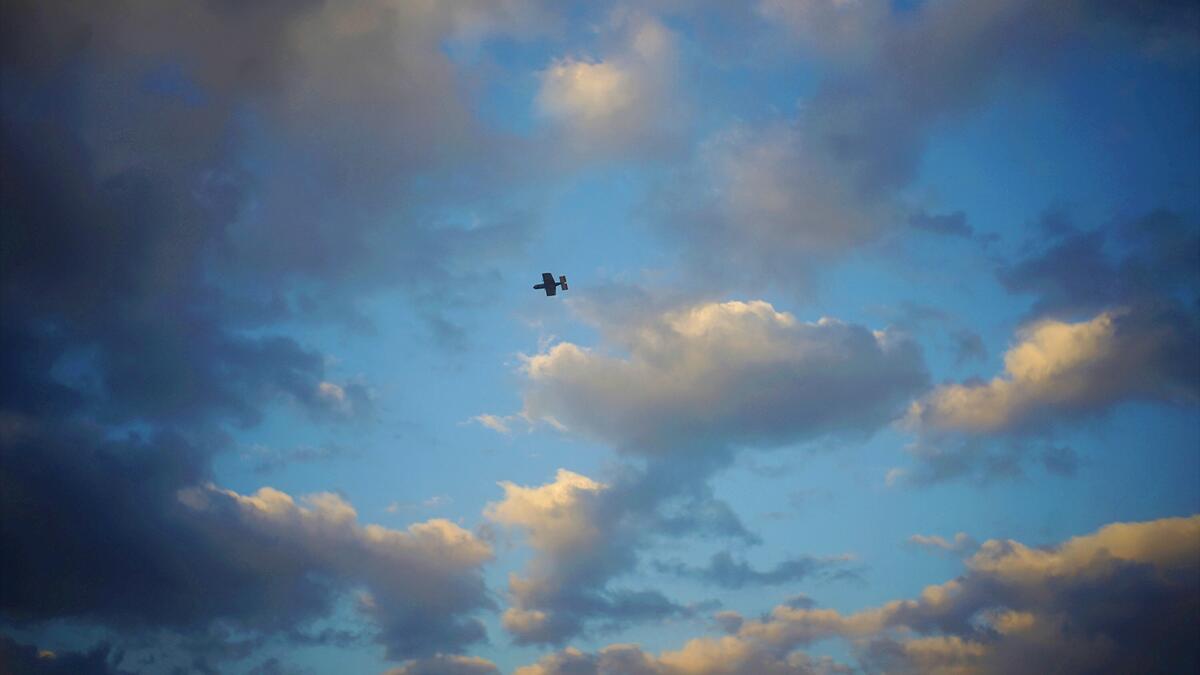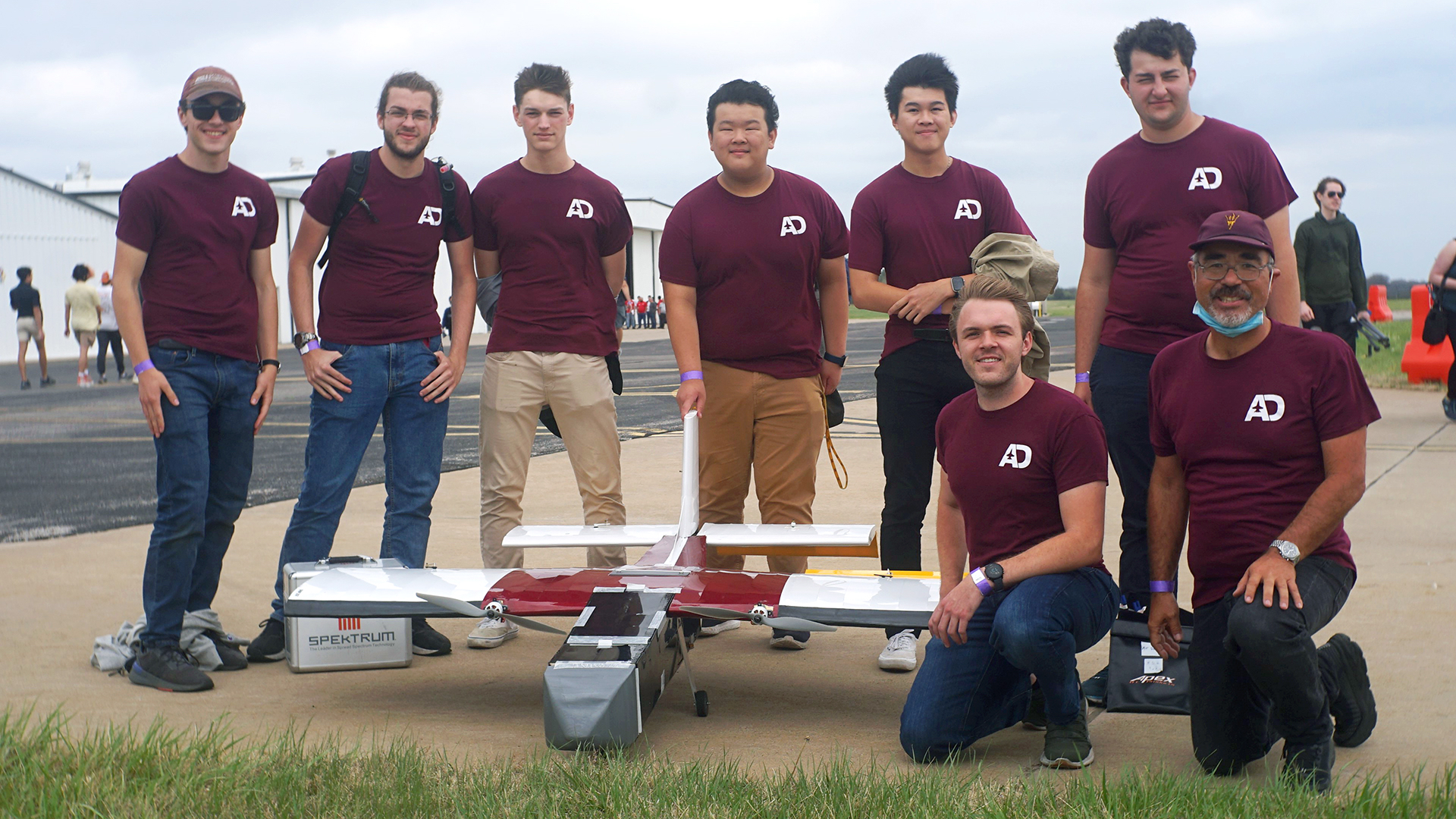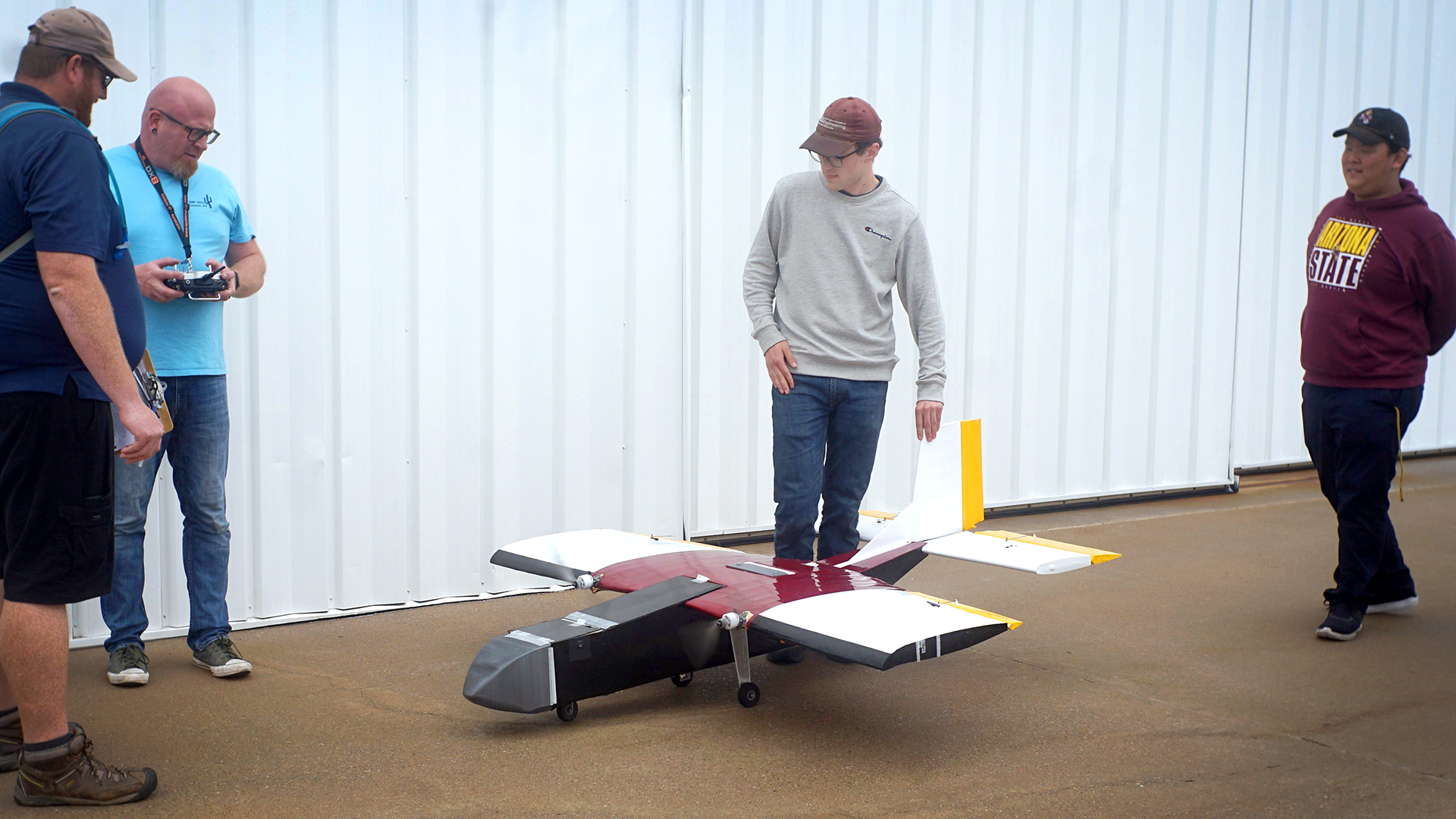Each year, the American Institute of Aeronautics and Astronautics, or AIAA, hosts a Design/Build/Fly competition, inviting students from around the world to design, fabricate and demonstrate the flight capabilities of an unmanned, electric-powered, radio-controlled aircraft that can best meet the specified mission profile.
The Air Devils student organization represents Arizona State University's Ira A. Fulton Schools of Engineering in the competition. Of the 127 schools with teams participating in the competition this year, ASU’s Air Devils won seventh place overall.
The 2022 competition in Wichita, Kansas, was the first to be held in person since the start of the COVID-19 pandemic. The AIAA presents a different design challenge to its competitors every year. This year’s was to develop an aircraft that could successfully deliver environmentally sensitive vaccine vial packages.
“Since aerospace engineering major capstone projects are paper studies, this club represents a great opportunity for aerospace engineering majors to actually design and construct an airplane for a competitive assessment,” says Timothy Takahashi, the Air Devils’ adviser and an aerospace engineering professor of practice in the School for the Engineering of Matter, Transport and Energy, one of the seven Fulton Schools.
Air Devils members come from a variety of backgrounds, each having their own influence that makes them best suited to work on certain components of the aircraft. But students still often face challenges that require them to learn completely different skills. This year, the aircraft’s payload handling system presented a challenge to the team members, who experimented with new software and techniques to build an effective device.
The Air Devils 2022 AIAA Design/Build/Fly team ready for takeoff. Back row, from left: Zachary Norris (incoming Air Devils president), Jack Griffin, Lucas VanNoord, Curtis Chan, Nicholas Cheng and Lucas Guaglardi. Front row, from left: Max Stauffer (outgoing Air Devils president) and Timothy Takahashi (faculty adviser). Photo courtesy of Air Devils
“The competition this past year introduced payload challenges that the team has never encountered,” says Max Stauffer, the outgoing president of Air Devils who recently graduated with a bachelor’s degree in aerospace engineering.
“The rules called for a challenging mission where the aircraft must carry and individually deploy a shock-sensitive box, then take off and fly an entire lap between deployments,” he says. “This requires careful handling of the payload boxes and fine control of how many are deployed at any time. This complexity is why we opted for individual claw mechanisms controlled by an Arduino-based microcontroller.”
This decision was only the beginning of the challenge, however. Each step of development was precluded by thousands of simulations team members used to understand the interaction between specifications such as payload weight and takeoff distance or endurance.
“The mission system design was highly mechanical in nature and was one of the most complicated subsystems the team has ever taken on,” Stauffer says.
The system centered on a set of claw arms driven by a small motor through a geared drivetrain that could carefully drop the shock-sensitive boxes representing environmentally sensitive vaccine vial packages. Each claw arm was controlled by a microcontroller.
“The club had never used a microcontroller in this way,” Stauffer says. “While it was very challenging with many lessons learned, we were able to successfully complete our missions at the competition.”
ASU Air Devils inspect their aircraft before flight. From left to right: AIAA Design/Build/Fly judge Chase Ashton, ASU alumnus and pilot Donald Wood, mechanical engineering major and next year’s Air Devils President Zachary Norris and aerospace engineering major Curtis Chan. Photo by: Timothy Takahashi/ASU
It is this experience with real-world applications — the malfunctioning, the misfiring, all of the worst-case scenarios — that Stauffer says provided him the greatest learning experience during the competition.
“With our aircraft, we originally planned to fly with six shock-sensitive payloads. We traveled to the competition expecting to deploy four, but we successfully deployed two on the flight line,” Stauffer says. “Despite this, we placed in the top 10 teams. While I did my best to account for underperformance early on, there are always more elements you must consider and account for to achieve whatever the desired outcome might be.”
Not every challenge the Air Devils faced was related to the construction of the team’s aircraft.
“Travel to Kansas with a large airplane and an entourage of students was a challenge,” Takahashi says. “We had a caravan of four vehicles from Tempe to Wichita loaded with students, the airplane and spare parts. Stauffer had car trouble on the way, and his car had to be towed into Wichita.”
Next year’s AIAA Design/Build/Fly competition will be in Tucson, so the Air Devils expect both a shorter journey to the competition and another chance to earn flying colors among their peers.
Top photo: The Air Devils’ aircraft on a test flight before the competition. Photo by: Timothy Takahashi/ASU
More Science and technology

Hack like you 'meme' it
What do pepperoni pizza, cat memes and an online dojo have in common?It turns out, these are all essential elements of a great cybersecurity hacking competition.And experts at Arizona State…

ASU professor breeds new tomato variety, the 'Desert Dew'
In an era defined by climate volatility and resource scarcity, researchers are developing crops that can survive — and thrive — under pressure.One such innovation is the newly released tomato variety…

Science meets play: ASU researcher makes developmental science hands-on for families
On a Friday morning at the Edna Vihel Arts Center in Tempe, toddlers dip paint brushes into bright colors, decorating paper fish. Nearby, children chase bubbles and move to music, while…




